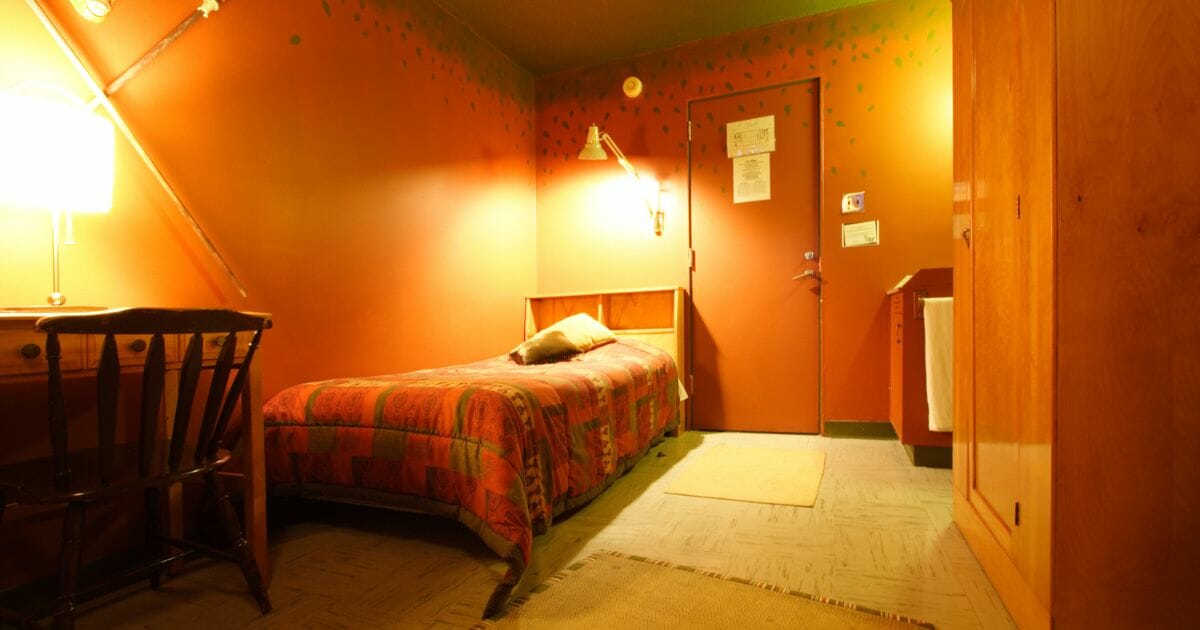Between spontaneous parties, intercom announcements blaring through your window, and all the other raucous activities going on in the dorm hallway, it’s easy to lose your sanity. And if you’re trying to study for an upcoming exam, it’s even more difficult to focus on your schoolwork.
The solution? Soundproofing your dorm room. But the real question is how to soundproof a dorm room without making it look like something out of a horror film – and how to do it without spending a lot of money.
To help you achieve the best results possible, we’ve rounded up some of our favorite ideas to block out the noise without breaking the bank.
How to Soundproof a Dorm Room – 5 Best Ways
While you certainly can’t make permanent alterations to walls, floor, and ceiling for obvious reasons, you can make your dorm room a lot quieter by taking these steps:
Use a Floor Rug

Rugs are one of the most effective ways to keep noise from entering or exiting a room. When placed under a bed, they provide a soft barrier against any vibrations that make it through the hardwood floors.
Not only does a carpet reduce sound (thanks to its thick pile and dense fibers), but it also adds warmth and comfort. Laying down a rug will also cover up the ugly cracks on your floor that seem like they belong in a prison yard. It’s a triple-win.
Cover the Ceiling

When living on the ground floor, you’re bound to hear people stomping around in the hallway above. And if they’re like most college students, those people probably don’t have much regard for their neighbors below. So what can you do? Try covering the ceiling with an acoustic panel to absorb some of the sound coming from above.
It’s easy to install and won’t cost much either. To hang the acoustic foam panel, follow these instructions:
- Lay down the acoustic panels over the existing carpet or hardwood floors so that you don’t damage them.
- Measure the ceiling and cut your acoustic foam panel to fit the dimensions.
- Apply the adhesive to the ceiling, then place the acoustic foam on top of it.
- Use your hand or a trowel to smooth out any air bubbles that form between the foam and the surface below.
- Once you’ve covered all of the open spaces, wipe away any excess adhesive with a damp rag or paper towel.
While it might not seem very attractive, it’s better than being awake until 6 every morning.
Adjust the Furniture

We all know that an empty room can be like an echo chamber. Add a desk, some bookshelves, and maybe even a sofa to the mix, and the acoustics will change dramatically.
This doesn’t mean you have to completely dismantle your room or fill it up with stuff. Instead, play around with your furniture until you find something that works for you.
Move your couch around or place the desk against the wall. This way, sound waves coming off one wall will get deflected off at an angle instead of bouncing back directly into its path.
The same goes for bookshelves – when placed correctly, they can act as a buffer and help stop vibrations from spreading through your dorm room.
As for couches and beds, they can actually help muffle sounds by absorbing them. For maximum sound isolation, you can top off your chair with a plush cushion or toss a fluffy comforter on your bed.
If you’re feeling a bit creative, consider adding a corkboard to your wall. Not only will it serve as a noise blocker but it can also be used to hang your favorite photos and artwork.
Install Sound-dampening Curtains
If you have a dorm room with windows that face a major road, you know how noisy it can get. The continuous thrum of cars, the high-pitched squeals of brakes, and the blare of horns are enough to make you want to throw your hands over your ears.
What’s more, dorm windows are notorious for letting in a lot of light, which can be quite distracting when you’re trying to sleep after pulling an all-nighter.
To cut down on the noise, consider replacing your regular curtains with soundproof curtains. Often made of thick materials like polyester, velvet, or suede, these special curtains absorb loud noises and sound waves, preventing them from bouncing back and disturbing your peace of mind.
Add a Door Seal
While this might seem like a small detail, a door seal can make a big difference. These ingenious foam pads can be placed on the bottom of a door or along its top edge to prevent your neighbor’s music from blasting through your room or the conversations held in their living quarters from seeping into yours.
The best part? Door seals are affordable and extremely easy to install. Just follow the packaging instructions, and you’ll have a perfectly soundproof door in no time!
Other Ways to Get Rid of Unwanted Noise in Your Dorm Room
Don’t feel like spending all day on a DIY soundproofing project? No problem! Here are some quick fixes that will help keep the peace:
Get a White Noise Machine
White noise machines are like the best friends you never knew you needed. These machines use a combination of frequencies to create a soothing hum that masks out annoying noises and helps you focus on what matters most — in this case, that sweet slumber.
These soothing hums can be anything from the sound of rain hitting your window to ocean waves crashing on the shore, so you can easily customize them to find your zen. Plus, they’re inexpensive, so there’s no excuse not to have one!
Use Noise-canceling Headphones
Just like a white noise machine, noise-canceling headphones consist of a microphone that analyzes the ambient sound and then produces an opposing sound wave to cancel out undesirable sounds.
With these headphones by your side, you don’t have to hear your roommate chomping on popcorn or that guy snoring on the other side of your room while you’re trying to get that much-needed sleep.
Wrap Up!
Now that you know how to soundproof a dorm room, you can rest easy knowing that you’ll be able to sleep peacefully through your neighbors’ late-night mosh pit and still be awake in time for your 8 am biology lecture.
And remember, if all else fails, just ask your RA to help you out. They will be happy to oblige!
